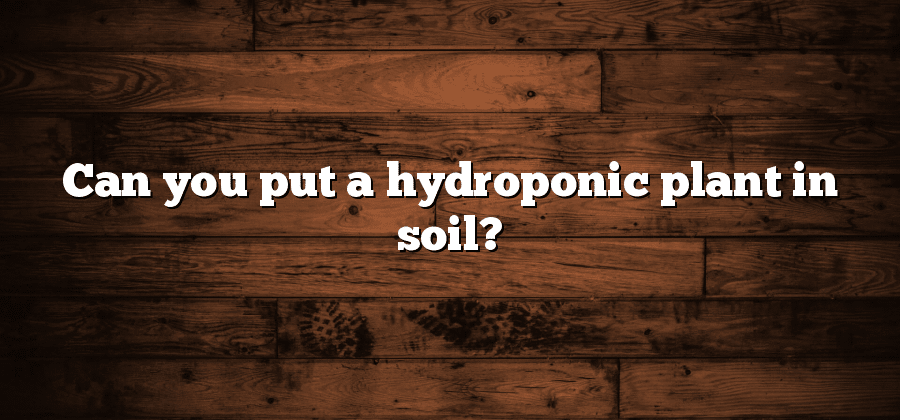Understanding Hydroponic Plant Growth
Hydroponic plant growth is a modern method of cultivating plants without the use of soil. Instead, plants are grown in nutrient-rich water solutions, which provide all the necessary minerals and nutrients for their growth. This method eliminates the need for soil and allows for more precise control over the plant’s environment, resulting in faster growth and higher yields.
One of the main reasons why hydroponic systems are becoming increasingly popular is their ability to optimize plant growth. By directly supplying plants with the nutrients they need, growers can ensure that the plants receive the ideal balance of minerals and trace elements. Additionally, hydroponics allows for control of factors such as temperature, light, and pH levels, further enhancing plant growth. This control enables growers to create the optimal conditions for each specific plant, maximizing its potential and ensuring consistently high-quality harvests.
The Benefits of Hydroponic Systems
Hydroponic systems have been gaining popularity in recent years due to their numerous benefits. One major advantage of hydroponic systems is their ability to optimize water usage. Unlike traditional soil-based planting, hydroponic systems use a recirculating water system, which allows for the conservation and reuse of water. This not only helps in water conservation efforts, but also reduces the overall amount of water needed for plant growth. Additionally, hydroponic systems eliminate the risk of water runoff and soil erosion, making them a more environmentally friendly option.
Another benefit of hydroponic systems is the precise control they offer over nutrient delivery. In traditional gardening, plants rely on the nutrients present in the surrounding soil. However, hydroponics removes this dependency by directly delivering nutrients to the plants through the water system. This enables growers to tailor the nutrient mix and concentration to suit the specific needs of each plant, resulting in healthier and more productive growth. Moreover, the controlled nutrient delivery in hydroponic systems minimizes the risk of nutrient imbalances or deficiencies, ensuring optimal plant health and vitality.
The Role of Soil in Traditional Plant Growth
Soil is an essential component in traditional plant growth and plays a crucial role in providing the necessary nutrients for plants to thrive. It acts as a reservoir, holding water and minerals that are essential for plant growth. The soil also provides a support system for the roots, anchoring the plants in place. Additionally, soil provides a medium for gas exchange, allowing oxygen to reach the roots and carbon dioxide to be released.
The composition of the soil determines its fertility and ability to support plant growth. It contains various organic matter, such as decomposed plants and animals, which provide essential nutrients for plants. These nutrients, including nitrogen, phosphorus, and potassium, are gradually released into the soil and taken up by the plant roots. The soil’s pH levels also play a crucial role in plant growth, as different plants prefer different pH levels. Overall, the soil is a complex ecosystem in itself and plays a vital role in supporting traditional plant growth.
Exploring Hydroponics: Soilless Plant Cultivation
Hydroponics, the art of growing plants without soil, has gained significant attention in recent years. This innovative method of soilless plant cultivation involves using a nutrient-rich water solution instead of traditional soil to provide plants with the necessary nutrients for growth. By providing the essential elements directly to the plant roots, hydroponics offers several distinct advantages.
Firstly, hydroponic systems allow for precise control over nutrient levels, pH balance, and water quality, resulting in optimal growing conditions for plants. This level of control enhances plant growth and may lead to higher yields and superior crop quality. Additionally, the absence of soil eliminates the risk of soil-borne diseases and pests, reducing the need for pesticides and herbicides. Furthermore, hydroponics requires less water compared to traditional soil-based planting methods, making it an environmentally friendly choice.
As farmers, gardeners, and researchers continue to explore the potential of hydroponics, its benefits and versatility become increasingly clear. With the ability to grow a wide range of plants in various environments, hydroponics has the potential to revolutionize the way we cultivate crops and address the challenges of an ever-growing global population. With ongoing advancements in technology and increased awareness, the future of hydroponics appears promising as the agricultural industry looks towards sustainable and efficient methods of food production.
Hydroponics vs. Traditional Soil-based Planting
Hydroponics and traditional soil-based planting are two distinct methods of cultivating plants, each with its own set of advantages and limitations. While traditional soil-based planting relies on natural soil for nutrient absorption, hydroponics employs a soilless system that utilizes water and nutrients directly.
One fundamental difference between hydroponics and traditional soil-based planting lies in the control over nutrient intake. In hydroponics, nutrients are carefully measured and provided directly to the plants through the water system. This allows for precise control over the nutrient balance and ensures that the plants are receiving all the essential elements they need for optimal growth. On the other hand, traditional soil-based planting relies on the natural composition of the soil, which may vary in nutrient content and availability. Consequently, this can lead to variations in plant growth and quality.






